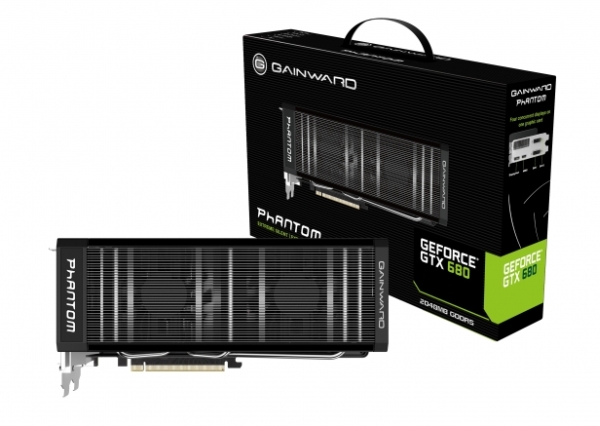Index
Gainward’s GTX 680 2GB we tested today is a reference version of the card, but that’s not to say we’re not pleased with its performance. Naturally, we’d much rather try out the Goes Like Hell Golden Sample Edition, because its GK104 GPU and GDDR5 memory indeed pack some overclocking potential, but our today's sample did quite well.
For those who do not like manual overclocking, Nvidia implemented auto-overclocking circuitry within the chip itself and called it GPU Boost. This feature monitors consumption, temperatures and workload, crunches the data and dynamically alters the clocks to provide optimum performance. This is why our Gainward GTX 680 ran at 1110MHz at times. Consumption is monitored by three internal chips, enabling the GK104 GPU to automatically overclock when the card is below the TDP threshold. The GTX 680’s TDP stands at 195W, which is considerably lower than the GTX 580' 244W.
Bottom line is that the GTX 680 is the fastest single-GPU card and provides great performance/consumption ratio. Note however that AMD’s HD 7970 does well at 2560x1600 and matches the GTX 680’s performance in many tests.
Power consumption and the two-display limit were a thorn in Nvidia’s backside for a while now. However, Nvidia finally addressed these issues and the GTX 680 allows for using all four video outs simultaneously.
Currently, AMD's HD 7970 is doing pretty good in Europe. The average price for AMD HD 7970 is around €460, here. Nvidia's GTX 680 is priced at the expected €479, here. The price of GTX 680 will eventually drop in Europe and probably follow the HD 7970 one but, until then, AMD HD 7970 will be doing quite well.
USA, on the other hand, is a bit different. While the EU has seen a slight but constant drop in HD 7970 prices since the launch in December, Newegg.com and other retailers/e-tailers have kept the card at steady US $549.99. Actually, you can currently get it cheaper, for US $534.99, but you have to buy two or more cards, which just a simple deal done by Newegg.com and Sapphire. These prices put AMD in an awkward position in the US, since GTX 680 sells for steady US $499.99.
Gainward’s GTX 680 is a great graphics card for gaming at 2560x1600. Gainward’s GTX 680 is a reference card, but there is little to complain about, since the basic design is nothing short of excellent. The cooling is good, keeping temperatures at bay with relatively little noise, and we have no complaints about the rest of the card either. Since custom designed and overclocked models are nowhere to be found as of yet, Gainward’s card will be a good choice since it’s available and among the most affordable GTX 680s.
Updated:
Gainward has now officially launched its newest Geforce GTX 680 Phantom card with custom PCB, factory overclock and new Phantom II cooler.
The new GTX 680 Phantom features a custom PCB with 6-phase DrMOS VRM desing that should provide additional overclocking potential as well more stability. The new GTX 680 Phantom ended up overclocked to 1084MHz for base and 1150MHz for boost clock while 2GB of GDDR5 memory paired up with 256-bit memory interface is working at 1575MHz (6300MHz effective).
The main feature of the GTX 680 Phantom card is its Phantom II cooler. Unlike previous Phantom cooler seen on the GTX 580, this one features new heatsink/fins design that provides better thermal performance, lower acoustic level and more solid structure. We are still looking at a 2.5-slot design with five "grand-prix" 6mm copper-water heatpipes paired up with copper base, large aluminum heatsink and two 80mm silent PWM GR8 fans. All these features add up to provide up to 7.8dB quieter and up to 6°C cooler card when compared to the reference one.
The availability is set for the middle of next month while the price still remains a mystery.





